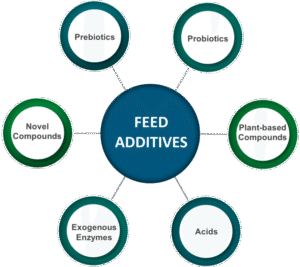Cephalization, sclerites, and their modifications are important aspects of the anatomy and evolution of arthropods, including arachnids and insects. These features play crucial roles in body organization, protection, and the specialized functions of various body parts.
1. Cephalization: Cephalization refers to the evolutionary trend in which sensory organs, nerve cells, and the brain become concentrated at the anterior (front) end of the body, forming a head region. This process is a major feature of most arthropods, including arachnids and insects.
Key Aspects of Cephalization
Concentration of Sensory Organs: The head region typically houses the primary sensory organs, such as eyes, antennae (in insects), and mouthparts, allowing the organism to better detect and respond to its environment.
Central Nervous System: The brain (or cerebral ganglion) is located in the head and processes information from the sensory organs, coordinating movement and behavior.
Efficient Movement and Feeding: Cephalization allows for more effective and directed movement towards food sources or away from predators, as the sensory organs and mouthparts are concentrated in one area.
In arachnids:
Cephalization leads to the formation of the prosoma (cephalothorax), which combines the head and thorax into a single unit.
The prosoma contains the eyes, chelicerae (mouthparts), pedipalps (sensory and feeding appendages), and the legs, facilitating coordination in capturing prey and processing sensory information.
In insects
The head is distinct and well-defined, with specialized structures like compound eyes, antennae, and various mouthparts adapted for feeding (e.g., biting, sucking, or chewing).
2. Sclerites: Sclerites are hardened plates or sections of an arthropod’s exoskeleton that provide structural integrity, protection, and flexibility. These plates are formed through the process of sclerotization, where the cuticle is chemically hardened.
Types of Sclerites: Sclerites are categorized based on their position on the body:
Tergites: Hardened plates located on the dorsal (upper) side of each body segment.
Sternites: Hardened plates found on the ventral (lower) side of each segment.
Pleurites: Lateral (side) sclerites that connect the tergites and sternites, helping to maintain the shape of the segment.
These sclerites interlock to form a rigid yet flexible exoskeleton, providing both protection and mobility to the organism. They allow the insect or arachnid to move efficiently while maintaining the structural stability of its body.
3. Modifications of Sclerites
The sclerites in arthropods can undergo various modifications to suit the specific needs of different species or body parts. These modifications contribute to the adaptability and specialization seen in the diverse forms of arthropods.
Examples of Sclerite Modifications
1. Adaptations for Feeding: In insects, the head sclerites (like those forming the mandibles, maxillae, and labium) are often modified into specialized mouthparts for different feeding habits (e.g., piercing-sucking in mosquitoes, chewing in beetles, siphoning in butterflies).
In arachnids, the chelicerae (mouthparts) are sclerotized and shaped into fangs or pincers used for grasping and injecting venom into prey.
2. Wing Modifications: Insects have modified sclerites that form the base of the wings, called the notum (part of the tergites), which provides attachment points for the wing muscles.
The forewings of some insects (e.g., beetles) are modified into hardened elytra to protect the delicate hind wings underneath.
3. Leg and Appendage Reinforcement: The sclerites forming the leg segments in both insects and arachnids (such as the coxa, femur, tibia, and tarsus) are often heavily sclerotized to provide strength and support for movement and grasping.
Modifications in these sclerites allow for specialized adaptations like jumping in grasshoppers, digging in mole crickets, or web-building in spiders.
4. Flexible Joints: The intersegmental membranes between sclerites are often less sclerotized, allowing flexibility at the joints. This design ensures that the body and appendages can move efficiently without compromising the overall rigidity of the exoskeleton.
In spiders, for example, the articulation between the leg segments allows precise movements essential for walking, hunting, or web-building.
Thank you for reading. Don't forget to subscribe & share!









